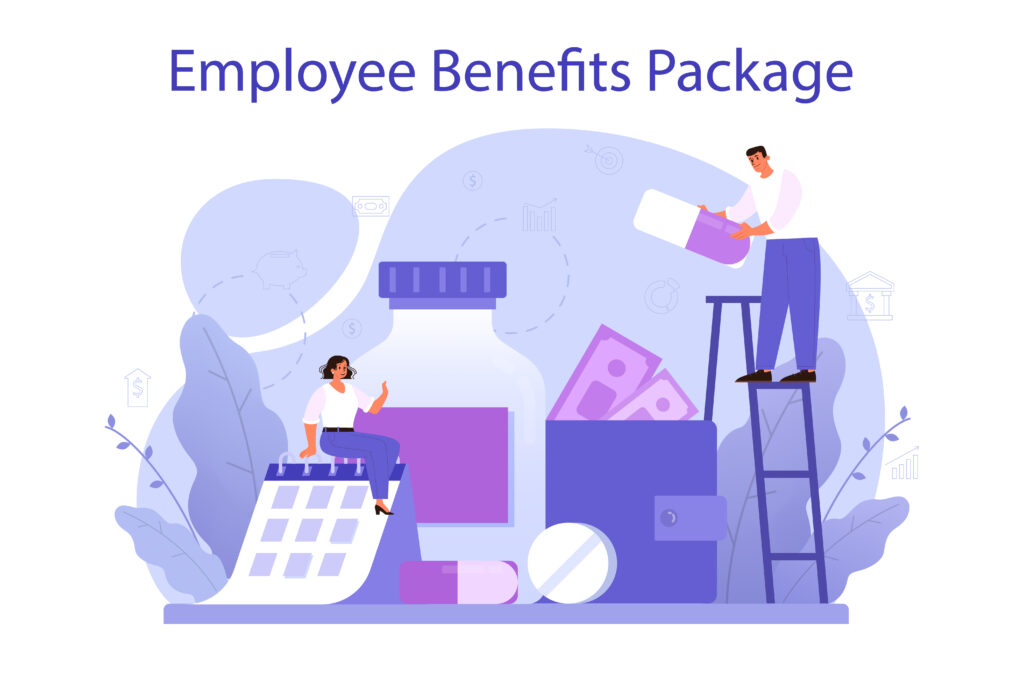I. Introduction to Compensation Management
Compensation management is a fundamental aspect of human resource management that involves the design, implementation, and maintenance of fair and competitive compensation packages for employees.
Compensation management plays a crucial role in attracting, retaining, and motivating top talent within an organization. The evolution of compensation management has witnessed significant changes over the years, reflecting shifting trends in employee preferences and organizational needs.
II. Definition of Compensation Management
Compensation management refers to the strategic process of designing and implementing compensation packages for employees within an organization.

Compensation management includes salary, bonuses, benefits, and any other of financial reward that employees receive in exchange for their work. The main goal of compensation management is to ensure that employees are fairly and equitably rewarded for their contributions to the organization.
Table of Contents
III. Types of Compensation Management
1. Types of Direct Compensation
Direct compensation includes monetary rewards that employees receive for their work. It consists of salary, wages, and bonuses that are directly paid to employees.
Salary
Salary is a fixed amount of money paid to employees on a regular basis, typically monthly or bi-weekly. It is based on factors such as job responsibilities, experience, and market trends.
Wages
Wages are hourly rates paid to employees for the hours worked. It is common in industries where employees are paid based on the number of hours worked, such as retail or manufacturing.
Bonuses
Bonuses are one-time payments given to employees as a reward for achieving specific goals or milestones. They can be based on individual performance, team achievements, or company profits.
2. Types of Indirect Compensation
Indirect compensation includes non-monetary benefits and perks that employees receive in addition to their salary or wages. It comprises employee benefits, perks, and allowances that enhance the overall compensation package.
Employee Benefits
Employee benefits are non-monetary rewards provided to employees to support their overall well-being and financial security. They can include:

- Health Insurance
- Retirement Plans
- Paid Time Off
Perks and Allowances
Perks and allowances are additional benefits that employees receive beyond their basic compensation. They can include:
- Company Cars
- Gym Memberships
- Meal Subsidies
3. Performance-based Compensation
Performance-based compensation is tied to an employee’s performance and contribution to the organization. It includes incentives such as commission, profit-sharing, and stock options.
Commission
Commission is a percentage of sales or revenue that employees earn based on their performance. It is commonly used in sales-driven roles to motivate employees to achieve targets.
Profit-sharing
Profit-sharing involves sharing a portion of the company’s profits with employees. It incentivizes employees to work towards the company’s success and aligns their interests with the organization’s goals.
Stock Options
Stock options allow employees to purchase company stock at a predetermined price. It gives employees a stake in the company’s performance and can lead to long-term retention and motivation.
4. Non-Monetary Compensation
Non-monetary compensation includes rewards that do not have a direct financial value but contribute to employees’ job satisfaction and engagement.
Recognition and Rewards
Recognition and rewards programs acknowledge employees for their contributions and achievements. They can include:
- Employee of the Month Awards
- Performance Acknowledgements
Flexible Work Arrangements
Flexible work arrangements give employees the flexibility to choose their work hours, location, or schedule. It can improve work-life balance and enhance employee satisfaction.
Training and Development Opportunities
Training and development programs provide employees with opportunities to enhance their skills and knowledge. It shows that organizations invest in their employees’ growth and development, leading to higher engagement and retention rates.
IV. The Process of Compensation Management
Compensation management is a crucial aspect of any organization’s human resources strategy. It involves designing and implementing a fair and competitive compensation system to attract, retain, and motivate employees Let’s delve into the key components of the compensation management process.

Components of Compensation Management Process
Job Analysis
- Job analysis is the starting point of the compensation management process.
- It involves systematically collecting information about a job’s, responsibilities, and required skills.
- This information helps in determining the relative worth of each job within the organization.
Market Analysis
- Market analysis involves benchmarking the organization’s compensation levels against industry standards.
- It ensures that the organization’s pay rates are competitive and aligned with market trends.
- Analyzing market data helps in setting appropriate salary ranges for different job positions.
Pay Structure Design
- Pay structure design involves establishing the framework for how employees will be compensated.
- It includes defining salary ranges, pay grades, and incentive structures.
- A well-designed pay structure ensures internal equity and consistency in compensation practices.
Performance Management
- Performance management is closely linked to compensation management.
- It involves evaluating employee performance, providing feedback, and setting performance goals.
- Performance appraisal results often influence decisions related to salary increases and bonuses.
Compensation Planning
- Compensation planning entails making strategic decisions about how to allocate the compensation budget.
- It involves determining salary increases, bonuses, and other incentives based on organizational goals and budget constraints.
- Effective compensation planning is essential for maintaining employee satisfaction and engagement.
V. Addressing Compensation Management Challenges
- Ensuring Internal Equity: Maintaining fairness and consistency in compensating employees based on skills, experience, and performance.
- Managing External Market Pressures: Staying informed about industry trends and competitor compensation practices to remain competitive.
- Adapting to Changing Business Needs: Adjusting compensation strategies to align with organizational changes and evolving market dynamics.
VI. Best Practices in Compensation Management
- Conducting Regular Market Research: Staying updated on industry benchmarks and trends to make informed compensation decisions.
- Communicating Transparently with Employees: Being open and clear about the rationale behind compensation decisions to foster trust and understanding.
- Offering Total Rewards Packages: Providing a holistic approach to compensation by including benefits, recognition programs, and career development opportunities.
VII. Conclusion
Effective compensation management is vital for organizations to attract, retain, and motivate their employees. By aligning compensation strategies with business objectives and market trends, companies can create a competitive advantage in the talent marketplace.
As the landscape of work continues to evolve, staying proactive and innovative in compensation practices will be crucial for organizational success.
FAQs:
Q.1 What is the role of technology in modern Compensation Management?
Technology plays a crucial role in modern Management by streamlining processes, ensuring accuracy, and improving overall efficiency. With the advent advanced software and tools, organizations can now effectively manage their compensation strategies with ease. Here are some key ways impacts Compensation Management:
- Automation: Technology allows for the automation of tedious manual tasks such as data entry, calculations, and reporting. This not only saves time but also reduces the risk of errors.
- Data Analysis: Through the use of analytics tools, organizations can gain valuable insights into employee performance, market trends, and compensation benchmarks. This data-driven approach enables informed decision-making in designing compensation packages.
- Integration: Technology enables the integration of various HR systems, such as payroll, performance management, and benefits administration. This integration ensures consistency and coherence in the overall Compensation Management process.
- Employee Self-Service: Many modern compensation software solutions offer self-service portals for employees to access their compensation information, submit requests, and track performance. This level of transparency and accessibility fosters employee engagement and satisfaction.
Q.2 How can small businesses implement effective Compensation Management strategies?
Small businesses can implement effective Compensation Management strategies by following these key principles:
- Market Research: Conduct market research to understand industry standards, salary benchmarks, and compensation trends. This information will help small businesses design competitive compensation packages.
- Clear Policies: Establish clear and transparent compensation policies that align with the organization’s values and goals. Communicate these policies to employees to ensure understanding and compliance.
- Performance-Based Pay: Implement performance-based pay structures to incentivize employees and reward top performers. Performance evaluations should be tied directly to compensation decisions.
- Training and Development: Invest in training and development programs to enhance employee skills and capabilities. This not only improves employee performance but also adds value to the organization.
- Regular Reviews: Conduct regular reviews of compensation packages to ensure they remain competitive and fair. Adjustments should be made as needed to retain top talent and motivate employees.
Q.3 What are the legal considerations to keep in mind when designing compensation packages?
When designing compensation packages, small businesses must adhere to legal considerations to avoid potential risks and liabilities. Some key legal considerations include:
- Equal Pay: Ensure compliance with equal pay laws to prevent discrimination based on gender, race, or other protected characteristics. Pay equity should be a priority in compensation design.
- Overtime Pay: Follow regulations regarding overtime pay, including minimum wage requirements, overtime eligibility, and hours worked. Non-compliance can lead to costly lawsuits and penalties.
- Benefits Administration: Administer employee benefits in accordance with legal requirements, such as providing healthcare coverage, retirement plans, and other mandated benefits.
- Tax Compliance: Keep up-to-date with tax laws and regulations related to compensation, including payroll taxes, deductions, and reporting requirements. Non-compliance can result in severe financial penalties.
In conclusion, effective Compensation Management is essential for attracting, retaining, and motivating employees. By leveraging technology, implementing strategic practices, and adhering to legal considerations, small businesses can design competitive and compliant compensation packages that drive employee satisfaction and business success.
Remember, the way organizations manage compensation can make a significant impact on employee satisfaction, engagement, and overall performance. By prioritizing fair and competitive compensation practices, businesses can create a positive work environment that fosters growth and success for both employees and the organization.